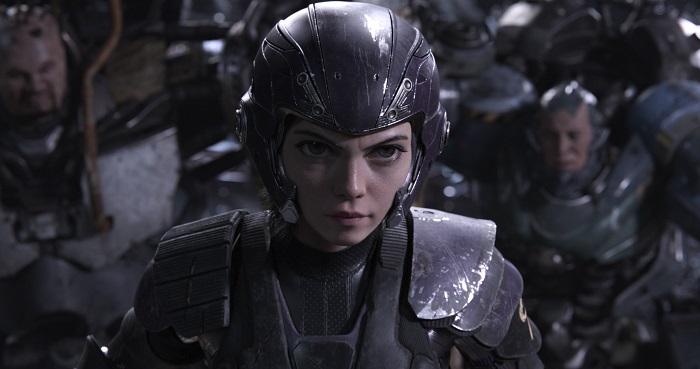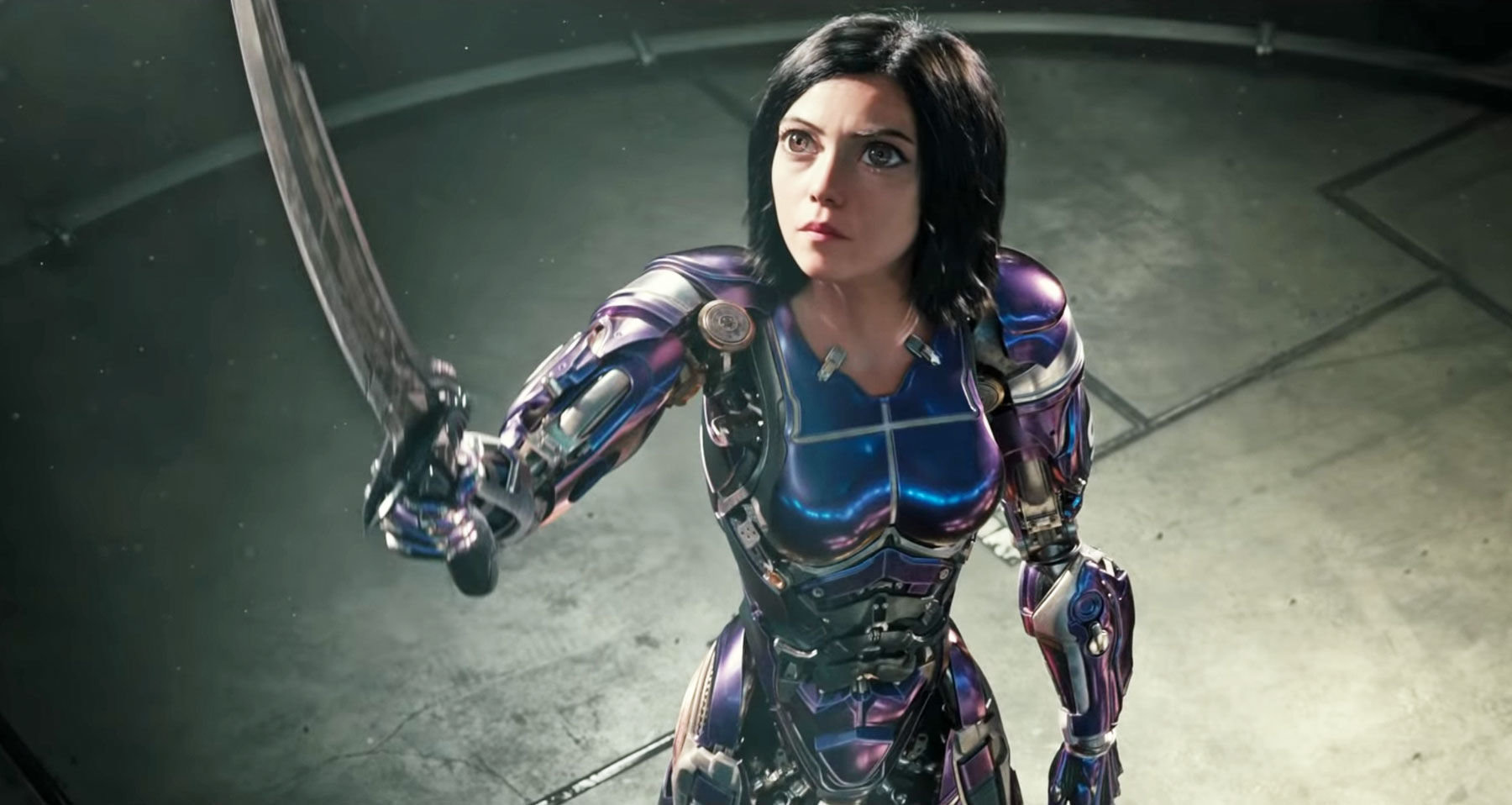Does James Cameron dream of electric mech-warriors? Cameron, a notable shepherd of science fiction, has always conveyed a greater fondness for the fiction rather than the science. But his best films, Aliens and Terminator 2: Judgement Day, allowed for enough of the variety of philosophical and scientific consideration that constitutes deep science fiction that our intellects were, on seem level stimulated concurrently with our senses.
The thing about science fiction however, is that when it isn’t up to date, it rings stale. Cameron has purportedly had a mind to adapt Yukito Kishiro’s manga “Gunnm” (Japanese comics, putting it artlessly), otherwise known as Battle Angel Alita, for a number of decades. Had he turned Kishiro’s work into a film when it initially came to his attention, it might have made for wonderfully fresh science fiction. As the dystopian 2019 of Blade Runner will tell you though, science fiction waits for no man. We’ve seen Battle Angel: Alita before, many times, in many films.
It is worth noting that Cameron has not actually been the man to adapt “Gunnm”, at least not directly. Fuelled with a curious zest to occupy his life making sequels to 2009’s Avatar, Cameron relinquished control to Robert Rodriguez. Rodriguez is a fascinating choice, as much as for his similarities to Cameron as for his differences. They are both filmmakers who, to put it indelicately, do not fuck around. I once watched a video in which a young filmmaker asked Cameron for advice on how to pursue his dreams. Cameron, incredulously, responded with ‘pick up a camera and start making films’. I can imagine that Rodriguez’ guerrilla attitudes to filmmaking – everything is quick, cheap and mostly done by him – would appeal to a man like Cameron.
Alita: Battle Angel is anything but cheap. It is the sort of film with a budget with which James Cameron would make a single film but Robert Rodriguez could make many. Rodriguez has noted that he saw himself as a conduit for Cameron’s creative sensibilities while working on this film. “The last thing I wanted was him to watch it and go, ‘Uh, damn it, I knew I should have shot it myself.'” Rodriguez says. “So I wanted him to feel like it was a Jim Cameron movie, too.” Rodriguez is an undeniably patchy filmmaker, perhaps a consequence of his particular style of production, but in the act of serving James Cameron’s sensibilities, he has lost his most valuable asset – his vitality.
For all the talk we may hear from special effects wizards about how far the industry has come, and it has come far, the crusade for photorealism in organic imagery is not yet complete. In Avatar, it didn’t matter because almost everything was digital, so a comparison wasn’t necessary. In Alita: Battle Angel, the protagonist is entirely computer generated, and composited next to real actors. I’m inclined to suggest that it still doesn’t matter because Rosa Salazar‘s performance as that protagonist, Alita, is so endearing.
She is the centrepiece of Rodriguez’s film, and arguably deserves a better piece of fiction. She also deserves a better character. Cameron has a fondness for strong female characters, though they can never be anything other than strong, a common fallacy of many Hollywood writers who believe that they are writing interesting female parts. And at the outset of the film, Alita remembers nothing. This is handy for the filmmakers, and our desire for clarity, as it allows characters to deliver long and laboured pieces of exposition. It is less handy for our immersion, and in a form of science fiction in which immersion is crucial. When the world building is as achingly laborious as this, it is counterproductive.
On the subject of world building, I’d like to mention the brief appearance of lanyards in the film. Some technology in Alita: Battle Angel, set several centuries into the future, is unimaginable. And then there are the lanyards that Alita and her special man friend Hugo (Keean Johnson) wear to get behind the scenes at an arena in which cyborgs engage in the high speed, highly dangerous sport of Motorball. In five hundred years it seems that all technology will be unrecognisable except the trusty old lanyard.

